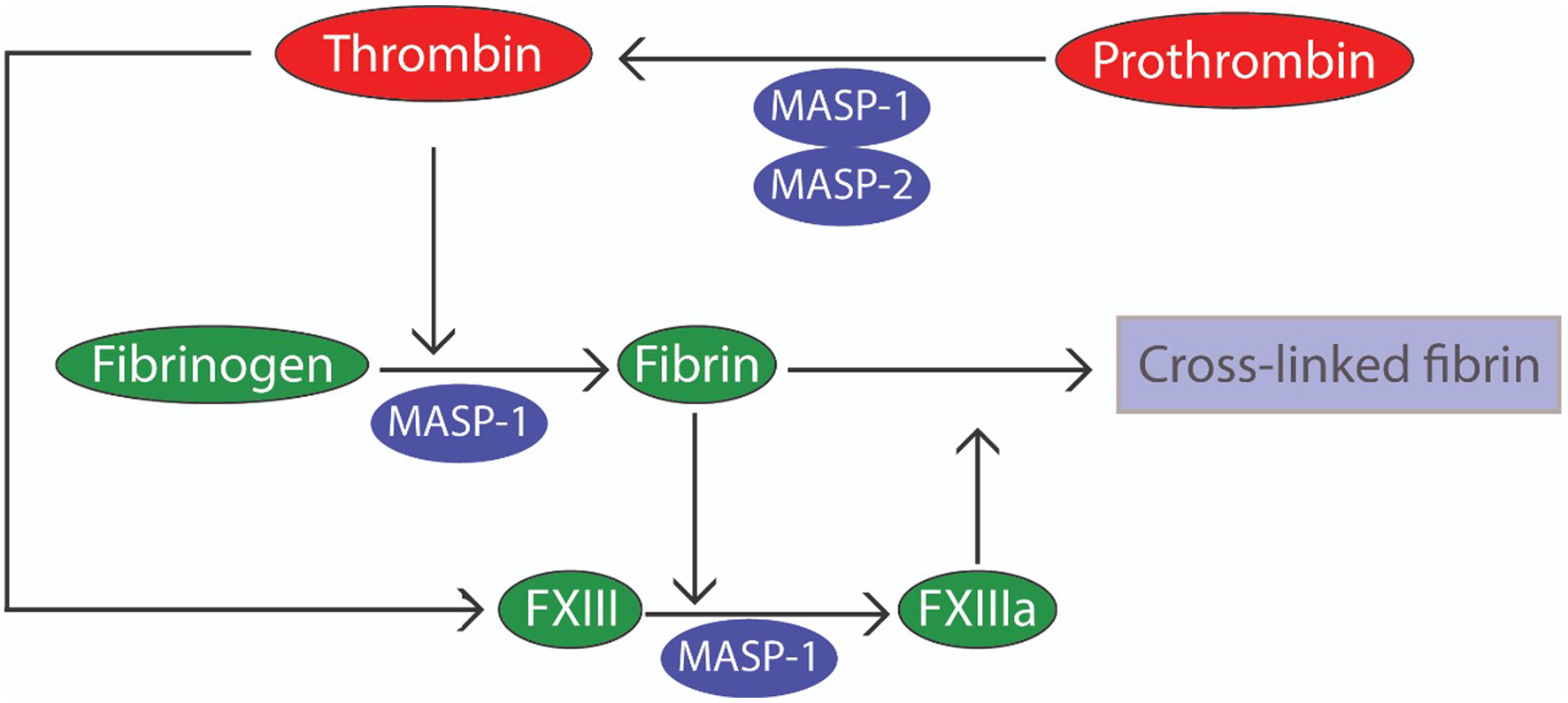
Figure 1. The coagulation cascade is composed of clotting factors (serine protease zymogens) and their cofactors. Effective hemostasis relies on the timely production of thrombin via prothrombinase, a Ca2+-dependent complex of factor Va (FVa) and FXa assembled on the activated platelet surface, which cleaves prothrombin (FII) at Arg271 and Arg320. In contrast, MASP-1 cleaves prothrombin at Arg393 and directly cleaves fibrinogen and activates FXIII due to its thrombin-like activity. On the other hand, MASP-2 is capable of activating prothrombin in a similar manner to FXa which indirectly cleaves both FXIII and fibrinogen through the active thrombin generated from prothrombin. FXIII and fibrinogen are unusual among clotting factors as neither is a serine protease. Fibrin acts as both the substrate and cofactor for FXIII; and once activated, the transglutaminase FXIIIa is capable of stabilizing fibrin clots by ligating adjacent fibrin monomers. MASP: mannan-binding lectin-associated serine protease.